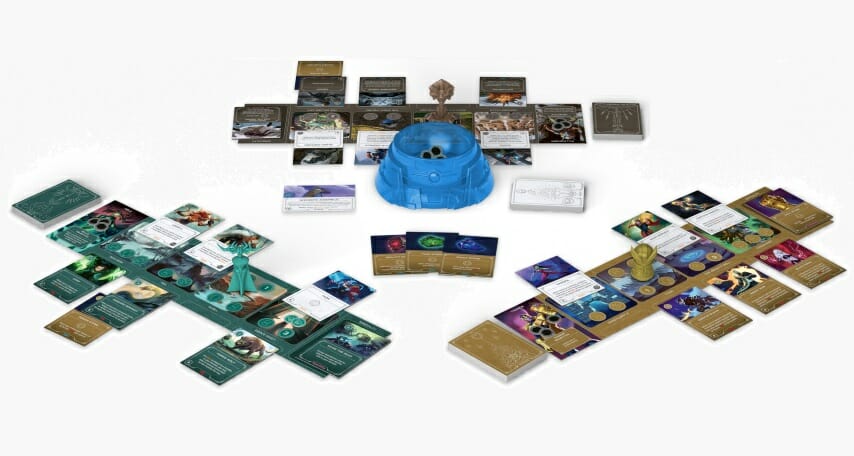The Disney Villainous Board Game Formula Gets a New Look with Marvel Villainous: Infinite Power
Photos courtesy of Ravensburger
The Disney Villainous game series started in 2018 with the initial box of characters, which asked players to compete as one of a half-dozen villains from Disney films, with each character getting its own card deck and trying to achieve a unique goal. The series has since expanded with three more boxes, each containing three new villains, all interplayable with characters from other boxes, ranging from the famous (Maleficent) to the obscure (Ratigan).
The newest entry in the series, Marvel Villainous: Infinite Power, introduces five villains from the Marvel Cinematic Universe, and it differs from the previous games in the series in two significant ways. First, it’s not interplayable with the previous 15 characters. Second, the Fate deck, which is the only way in which players in Villainous interact with and try to interfere with each other, is a single, shared deck, rather than one unique Fate deck for each player, and now there are common Events in that deck that can affect all players until they work together to defeat it. That produces a very different playing experience, one that improves on the low degree of direct competition between players in the original series, but also adds a degree of complexity and can lead to longer playing times too.
In all Villainous games, each player will work through a prefab deck unique to that villain, playing one or two cards on each turn to their ‘domain,’ gaining Power tokens they use to play or activate cards. Players may also choose to Fate opponents, which means drawing the top two cards from a specific opponent’s Fate deck and choosing one of the two to play, which can be a one-time event or can play a Hero card to the top of the opponent’s domain, blocking certain actions until that player defeats the Hero. One of the most important mechanics in the game is the discard action, available only on certain spaces in each domain, because each deck has specific cards that the player must play to win or that are extremely helpful in advancing the player towards victory, so discarding cards that aren’t useful at that moment to try to run through your deck is essential.
